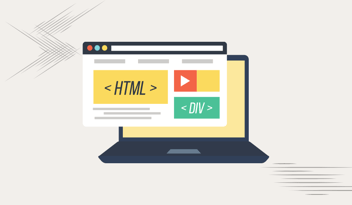
If you want an online presence that helps increase awareness of your business and nurtures relationships with potential customers, it’s essential to have a user friendly website. By prioritizing search engine optimization (SEO) and following web design best practices, you can create a beautiful and functional website that can increase business. Below is a website usability checklist you can reference when making fundamental updates to your design, navigation, and other important site features.
A Responsive Layout
A good user experience begins with a responsive website design. Non-responsive websites not only frustrate smart device users, but they also can make your marketing tactics feel outdated or ignored. Utilizing a responsive layout can encourage visitors from all devices to stay on your site longer and allow them to more easily access the information you are offering. See one of our previous articles to find additional benefits of making your website more responsive.
Visual Hierarchy
A sound website design features simple and aesthetically pleasing visual cues that help users navigate and understand the website. While great content is a crucial element of your site, visual hierarchy paves the road to the important aspects of the site and helps users keep their eyes on areas that matter. Consider the following ideas to improve the visual hierarchy on your site.
- Make important elements easy to find with color or scale. If a certain call to action is important to your business, make sure it doesn’t get lost in the design.
- Place something eye-catching like a splash image or a video near the top of the design to draw in the user.
- Avoid clutter. Adding too many design elements can cause the hierarchy to become lost or difficult to understand.
- Use white space to your advantage. Give areas of emphasis some room to breathe to eliminate competition with other elements.
A Site Search Function
Depending on the size of your website, a search function could be a great addition to improve user experience and functionality. While you may have a full understanding of all of the content that lives on your site, new visitors don’t! By incorporating a search function, you can save users time and better assist them in finding everything you have to offer.
Simple Form Entry
Have you ever been frustrated when you arrived at an appointment and found yourself stuck filling out a ton of forms? Time matters to all of us, and keeping your form entry an efficient process is crucial for a pleasant user experience. When asking users to fill out a form on your site, keep the instructions and fields simple, and try to remove unnecessary steps. If you are offering something in exchange for the form (like an ebook or other downloadable content) ensure you are delivering on your promises to build trust with the user. Check out this article for more ideas on how to create a good form.
Good Design and Color Choices
Not only does a good design incorporate a responsive layout, but it also highlights the key features of your site and gives the user a clear understanding of what to do. Color is a key element to accomplish this goal as it helps guide the eye around the page and can make your site feel cohesive, welcoming, and professional. Pairing strong color choices with great imagery helps express your brand and can make emotional connections with your target audience.
Homepage Navigation Best Practices
It’s essential that your navigation menu serve as the road map for users to follow around the website. A concise, logical navigation menu gives visitors a sense of what the site has to offer and provides a clear path to the most important pages. Make your navigation menu a helpful tool for users by following these best practices:
- Keep the menu consistent on every page of the site to avoid confusion and reinforce important pages
- Give the menu prominence by placing it an area that’s easy to see.
- Avoid including too many menu items, which can result in reduced website responsiveness and cause items to compete with one another.
- Use a logical strategy to choose menu items; this will influence the structure of your website and affect SEO.
Using this checklist can help make your website more user friendly as well as improve its performance and increase engagement with potential customers. If you are interested in learning more about improving or redesigning your website, contact Blue Frog Marketing. With offices in Des Moines, Denver, and Huron, we offer a range of website design services to clients across the country.



